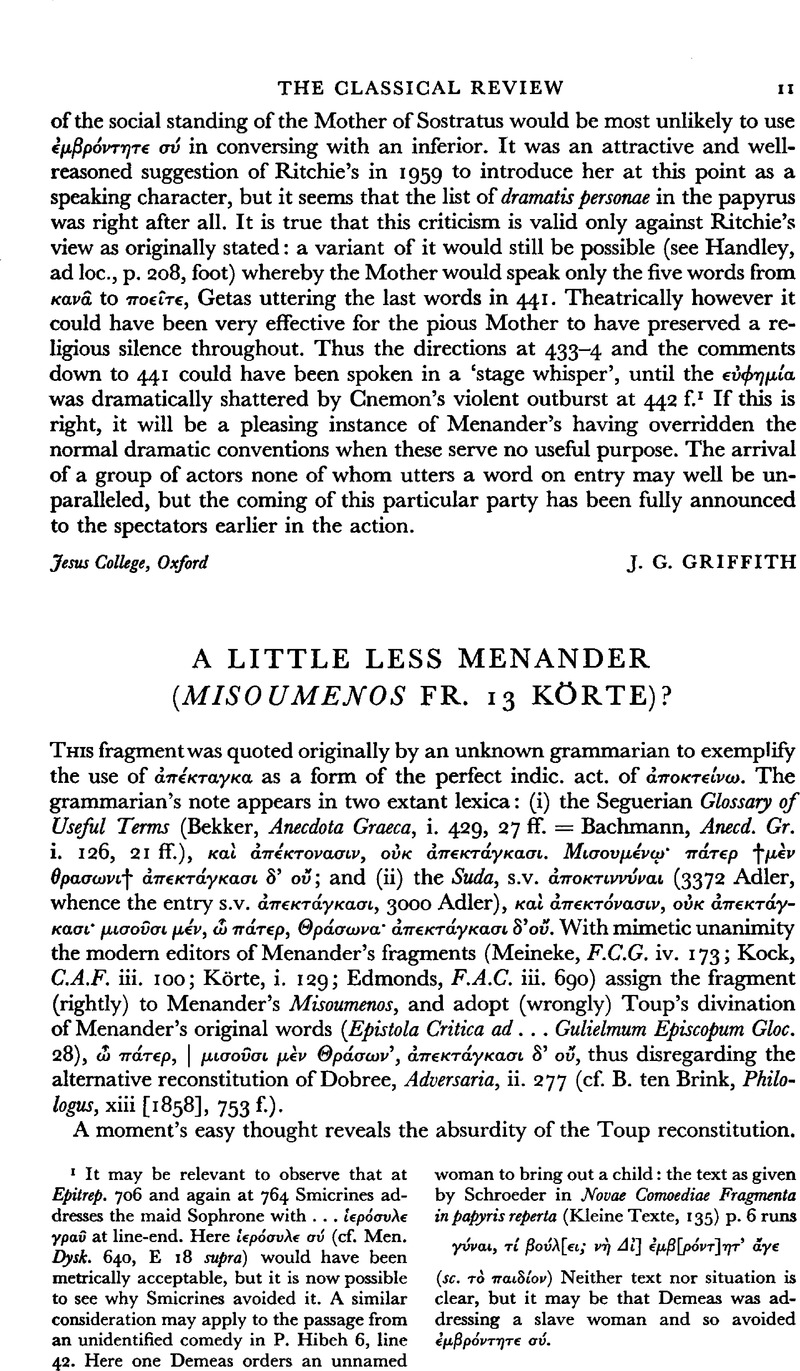No CrossRef data available.
Article contents
A little less Menander (Misoumenos fr. 13 Körte)?
Published online by Cambridge University Press: 27 February 2009
Abstract

- Type
- Review Article
- Information
- Copyright
- Copyright © The Classical Association 1968
References
page 12 note 1 Thrasonides is in fact the alternative title to the play in the colophon of the new Oxyrhynchus fragments (Turner, , B.I.C.S. Supp. 17, pp. 5, 73Google Scholar; cf. Austin, C., C.R. lxxx [1966], 295Google Scholar); it is the only form of the name that is certainly attested in the extant fragments (at v. 65 Körte = C↓ 12 Turner; C↓ 36 Turner proves v. 36 Körte to have been wrongly read and supplemented; at v. 86 Körte = D→ ii. 2 Turner the form of the name is uncertain); and ancient references to the play have only Thrasonides (Choricius, , xlii Decl. 12, p. 509 F.-R.Google Scholar; Arrian, , Diss. Epict. iv. 1. 19Google Scholar). And there is no evidence that in normal usage patronymics and the names from which they were formed were at all interchangeable. In fact variational endings in Attic appear confined to Kosenamen (e.g. diminutives in -⋯διον, forms in -ων, -ισκος), and even then are fairly rare outside the vocative. Cf. Ar. Nub. 80, 222 f., Ran. 579–82; Alexis frs. 97, 168 (Κωβ⋯ων, -ι⋯ς); Ter. Adelph. 763 and Dziatzko–Kauer ad loc.; and in general F. Bechtel, ‘Die einstämmigen männlichen Personennamen d. Gr., die aus Spitznamen hervorgezogen sind, Abh. Göttingen (1898).’
page 12 note 2 ‘Quid in Bekkeri codice γ′ἣδ′… sit, equidem nescio’, Körte; the interpretation is eased by mosaic representations such as that of the Samia at Mytilene (cf. Dedoussi's edition of the play, 2 f. and plate), where the inscribed Μ(⋯ρος) Γ is a reference to play's third act.
page 13 note 1 None of the published papyrus fragments of this play, to the best of my knowledge, provides any anchor for this fragment.
page 13 note 2 Or could ⋯πεκτ⋯γκασι have had a nonpersonal subject, e.g. αἱ σπ⋯θαι (cf. v. 11 Körte = B↓ 5 Turner, and fragment 11)?
page 13 note 3 Adopting Dobree's Θρασων⋯δην.
page 13 note 4 On this aspect of the plot see Turner pp. 15 ff.




